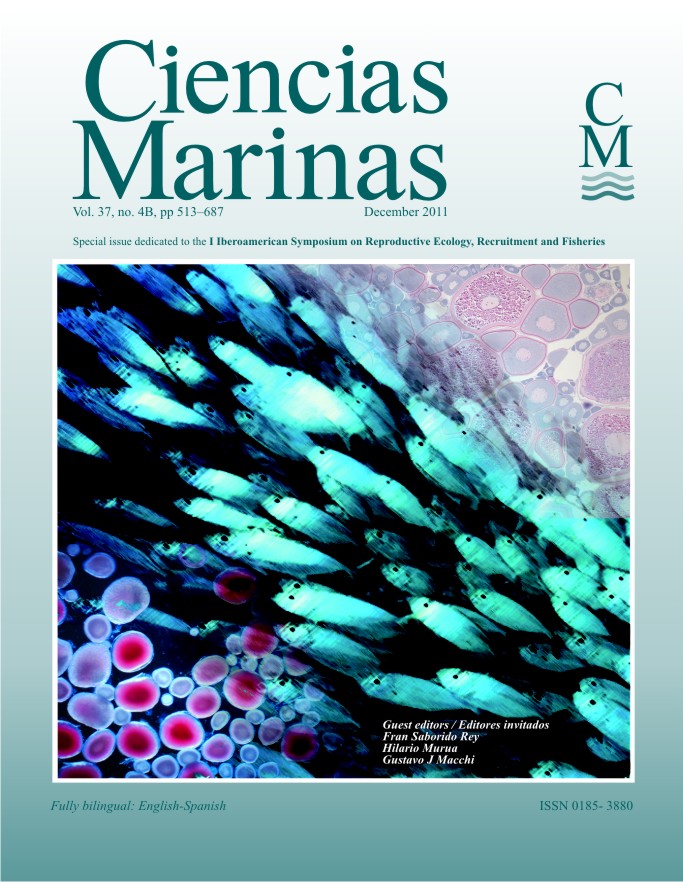Spatial and temporal changes in batch fecundity of common sardine and anchovy off central and southern Chile (2002–2007)
Main Article Content
Abstract
Anchovy Engraulis ringens and common sardine Strangomera bentincki are two small pelagic fish that co-occur in the same reproductive habitat off central and southern Chile and have a similar reproductive strategy. Interannual and spatial changes in the batch fecundity of both fish were analyzed with the purpose of detecting variability in the parameters and inferring different reproductive tactics that could affect the reproductive potential. Samples were obtained from adult surveys carried out to estimate spawning biomass by the Daily Egg Production Method, from 2002 to 2007, off Chile. The study area was divided into two zones: central and south. The batch fecundity was linearly related to ovary-free female body weight for each year. For anchovy, the slope was not different across years and zones, while for sardine, changes in intercept and slopes varied significantly among years, but not between zones. The average weight of mature females tended to be higher in the south zone for both species, and average batch fecundity ranged from 4,283 to 8,903 eggs per mature female anchovy, and from 5,901 to 10,414 eggs per mature female sardine. Although the anchovy and sardine reproductive strategy is similar, differences in batch fecundity seemed to be the main distinction between the species in the central and southern spawning sites off Chile, with implications for the reproductive potential.
Downloads
Article Details
This is an open access article distributed under a Creative Commons Attribution 4.0 License, which allows you to share and adapt the work, as long as you give appropriate credit to the original author(s) and the source, provide a link to the Creative Commons license, and indicate if changes were made. Figures, tables and other elements in the article are included in the article’s CC BY 4.0 license, unless otherwise indicated. The journal title is protected by copyrights and not subject to this license. Full license deed can be viewed here.

